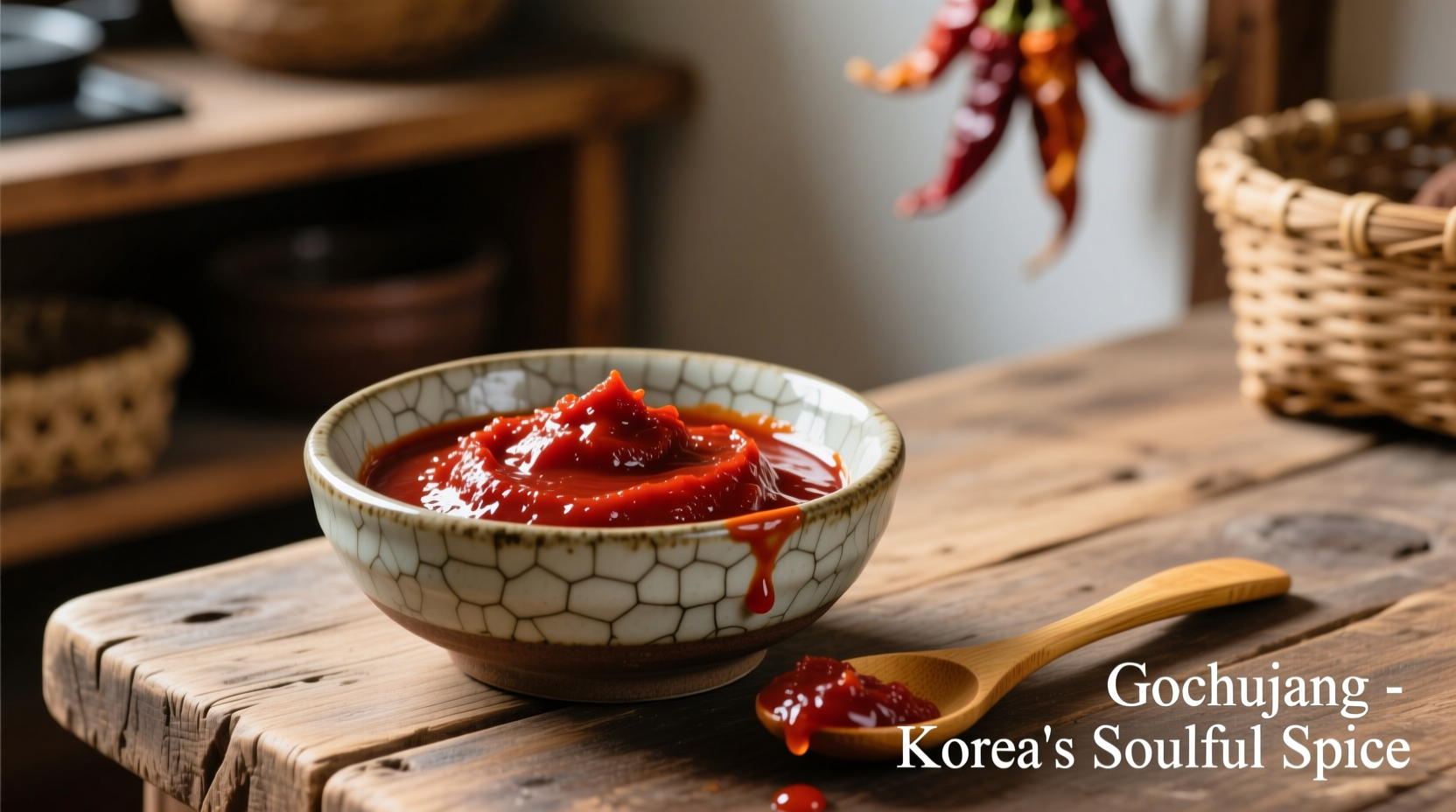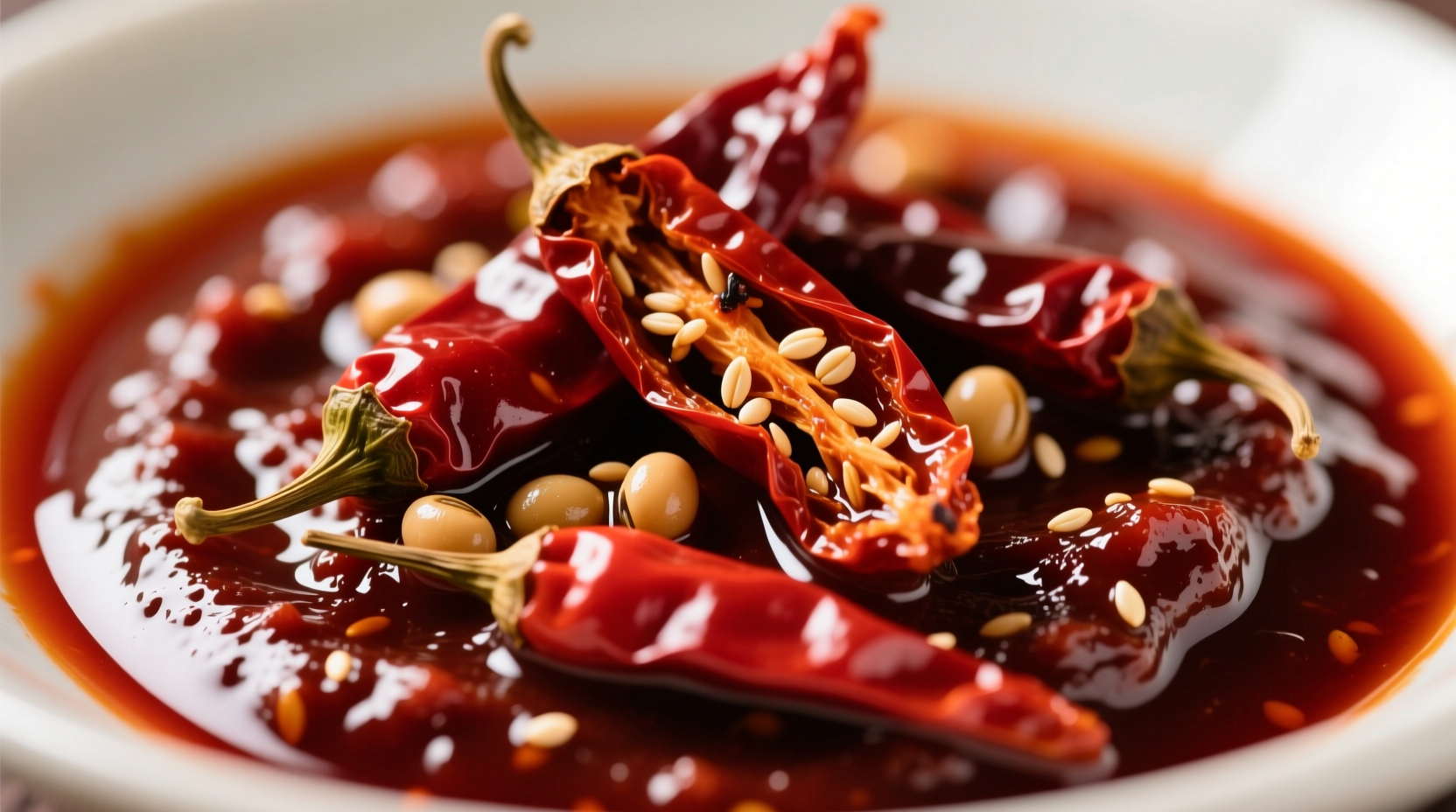Ever wonder what gives Korean barbecue its distinctive kick or bibimbap its addictive depth? Understanding what does gochujang taste like unlocks a world of authentic Korean cooking. As someone who's documented spice traditions across Asia, I've seen how this vibrant red paste transforms dishes with its unique flavor chemistry.
The Complete Gochujang Flavor Breakdown
When you first taste gochujang, three elements hit your palate simultaneously:
- Sweetness - From glutinous rice syrup (not added sugar), providing a rounded, caramel-like foundation
- Heat - Moderate chili burn (3-6/10) that builds gradually without overwhelming
- Umami depth - From fermented soybeans and aged chili powder, creating that "savory backbone"
Unlike single-note hot sauces, gochujang's magic lies in its layered complexity. The fermentation process develops subtle tanginess and earthy undertones that evolve as you eat. Think of it as Korean cuisine's flavor anchor - present in everything from stews to marinades.
Gochujang vs. Other Popular Sauces: Flavor Comparison
| Sauce | Heat Level | Sweetness | Umami Factor | Best For |
|---|---|---|---|---|
| Gochujang | Moderate (3-6/10) | Medium (natural rice sweetness) | Very High (fermented) | Marinades, stews, dipping sauces |
| Sriracha | Medium-High (5-7/10) | Low (vinegar tang) | Low | Drizzling, quick heat boost |
| Harissa | High (6-8/10) | Very Low | Medium | North African dishes, roasts |
| Ketchup | None | High (added sugar) | Low | Burgers, fries, base for sauces |
This gochujang flavor comparison chart shows why it's not interchangeable with other sauces. While sriracha delivers straightforward heat, gochujang offers multidimensional flavor that builds complexity in dishes over time.
How Gochujang's Flavor Develops Through History
Understanding what does gochujang taste like requires appreciating its evolution. Originally developed during Korea's Joseon Dynasty (1392-1897), early versions used only chili peppers, fermented soybeans, and salt. The modern sweet profile emerged when glutinous rice was added in the 18th century.
According to research from the Korean Food Research Institute, traditional fermentation takes 6-12 months, allowing enzymatic reactions to develop the characteristic sweet-umami balance. Commercial versions often shorten this to weeks, sacrificing some complexity.
Practical Flavor Applications: When to Use Gochujang
Knowing how hot is gochujang compared to other sauces helps you use it effectively:
Best Pairings
- Meats - Especially pork and chicken (the sweetness caramelizes beautifully)
- Vegetables - Eggplant, mushrooms, and root vegetables absorb its flavor well
- Grains - Mixed into rice or used as bibimbap sauce base
When to Avoid It
- Fish dishes (overpowers delicate flavors)
- Desserts (despite sweetness, savory notes clash)
- With very acidic ingredients (vinegar competes with fermentation tang)
Professional chefs at Seoul's National Folk Museum recommend starting with 1-2 teaspoons per serving when experimenting. The flavor integrates beautifully when cooked, but can dominate raw applications.
Authenticity Indicators: Finding True Gochujang Flavor
Not all gochujang delivers the same experience. Authentic versions should list these ingredients:
- Gochugaru (Korean red pepper flakes)
- Mejugaru (fermented soybean powder)
- Glutinous rice syrup
- Sea salt
- Water
Avoid products with:
- Added sugar (authentic versions get sweetness from rice)
- Preservatives like potassium sorbate
- Artificial colors
When sampling what does gochujang taste like in English terms, authentic versions show:
- Initial sweet note that gives way to moderate heat
- Rich, almost meaty umami backbone
- Subtle fermented tang (like miso but fruitier)
- No vinegar sharpness (common in imitations)

Common Flavor Misconceptions
Many ask does gochujang taste like sriracha - they're fundamentally different. Sriracha is primarily chili-vinegar-garlic, while gochujang is a fermented paste with complex enzymatic development.
Another misconception: is gochujang sweet or spicy? It's both, but the sweetness balances rather than masks the heat. The fermentation creates natural sugars that integrate with the capsaicin for a rounded experience.
According to sensory analysis by Food Science researchers, the average gochujang contains 5-8% natural sugars from rice conversion, explaining its distinctive sweet-spicy harmony.
Maximizing Gochujang's Flavor Potential
For home cooks wondering what foods pair well with gochujang, try these professional techniques:
- Bloom it - Stir into hot oil briefly before adding liquids to intensify flavors
- Balance acidity - Add rice vinegar or citrus to brighten heavy applications
- Dilute strategically - Mix with sesame oil or broth for marinades
- Layer flavors - Combine with doenjang (soybean paste) for deeper complexity
Remember that cooking transforms gochujang's flavor profile. The heat diminishes slightly while umami deepens, making it perfect for braises and stews where flavor integration matters most.











 浙公网安备
33010002000092号
浙公网安备
33010002000092号 浙B2-20120091-4
浙B2-20120091-4